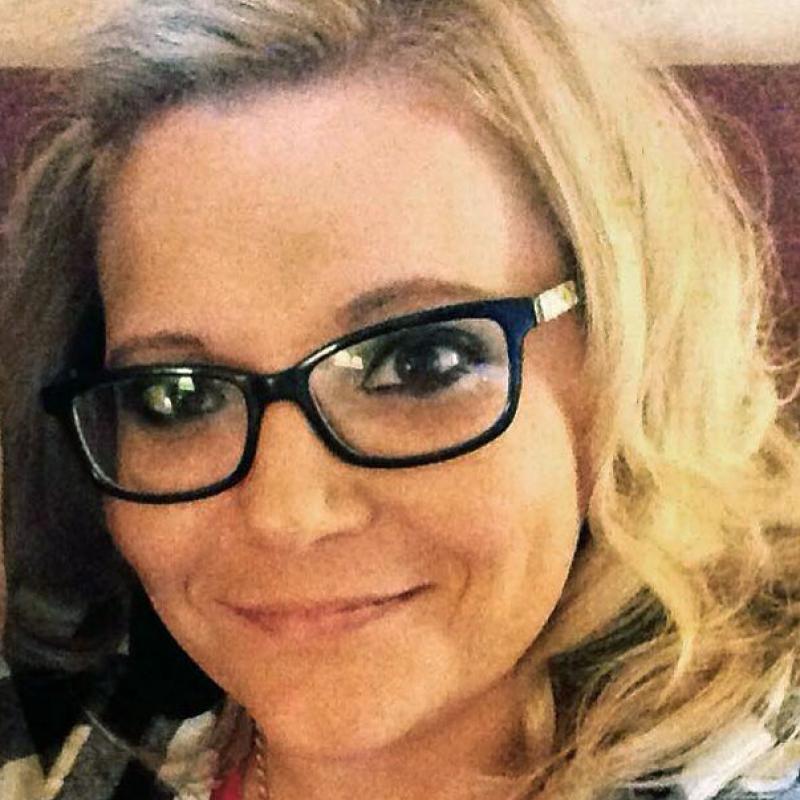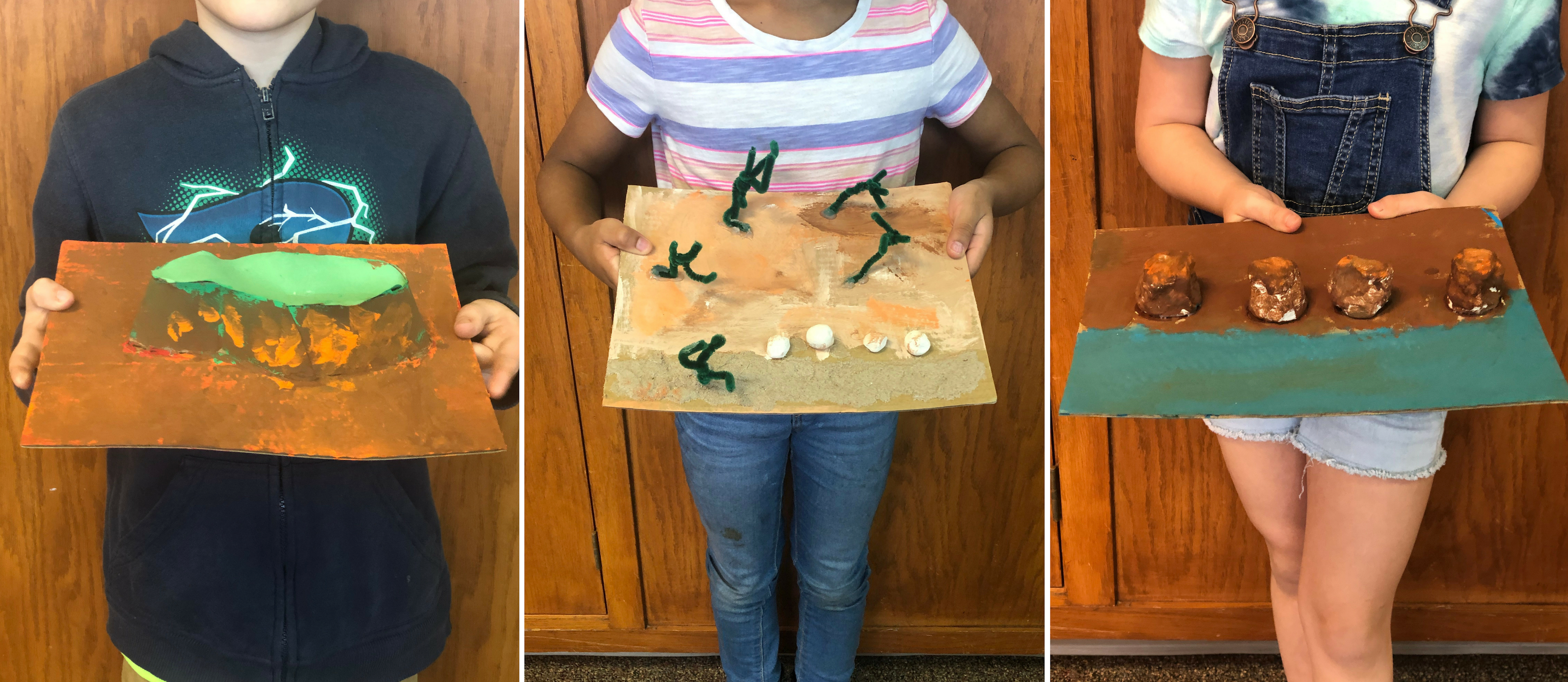Allow your students to take control of their own learning by providing them the opportunity to use critical thinking skills while collaborating with peers to build landforms. The landforms will then be added to a student created map to help showcase their learnings. Sit back and watch your students' eyes light up as they present their hard work. Make sure you grab the free printables here that support the project-based learning project.
The first step to starting a project-based learning project in your classroom is to sit down and plan out what the final project will be and who students' will present to. Start small!
For this PBL, students will be showcasing their understanding of landforms and how natural disasters affect them by creating a map of 3D landforms!
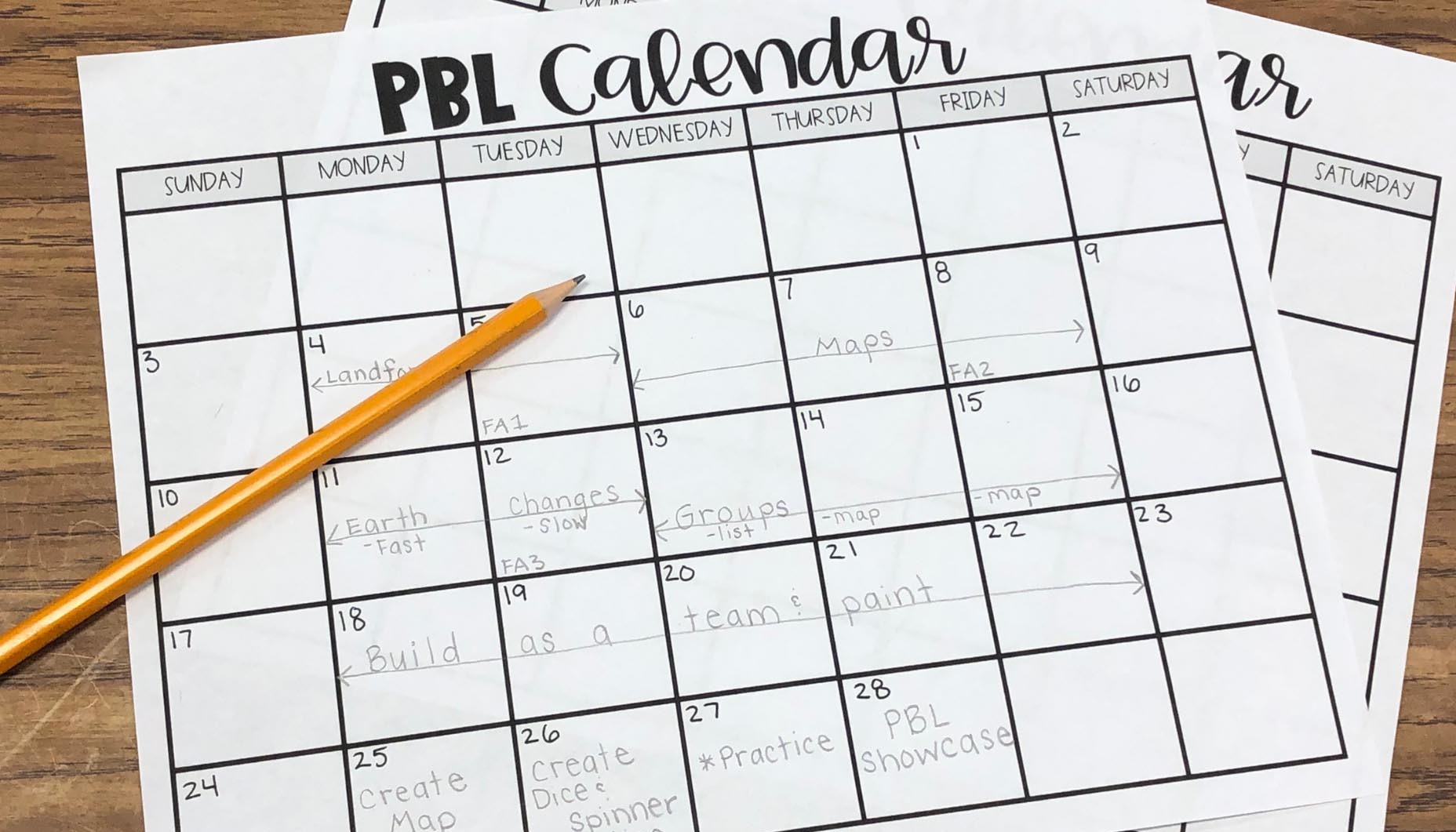
Using the free printable calendar, start planning out the lessons. As you can see, I only added in very basic information. This wasn't my ACTUAL lesson, but a guide to keep the project on track. Once the plan was established, it was time to start learning!
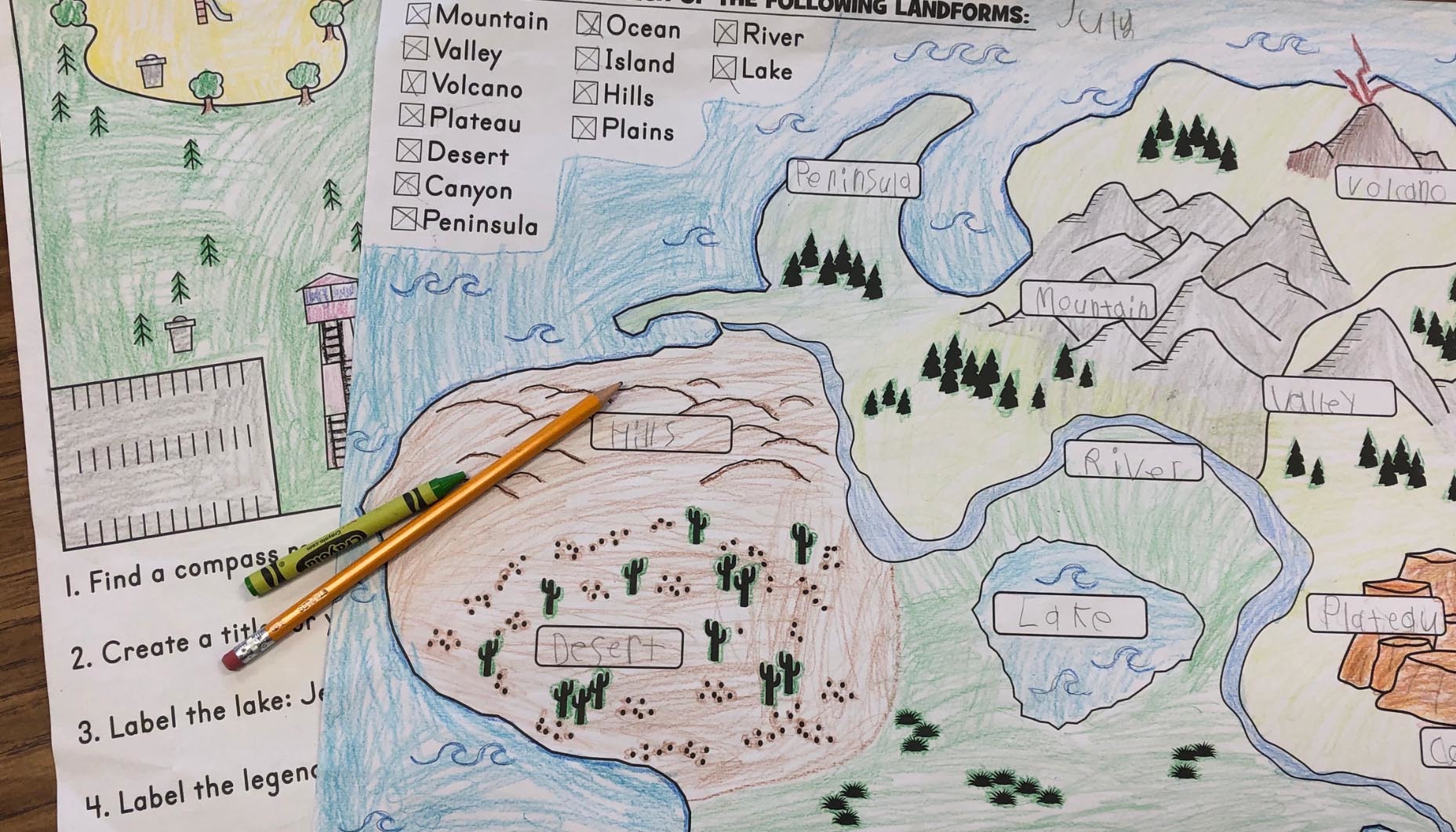
We used the Color Your Own Label & Color Landform Posters to learn all about landforms. It was interesting to see which landforms students could already identify independently. We also learned all about maps using the "All About a Map" Posters. This set allows students to learn about the key parts of a map. It is also a great way to practice listening and following directions! Both sets of posters are large and would work great for partner work.
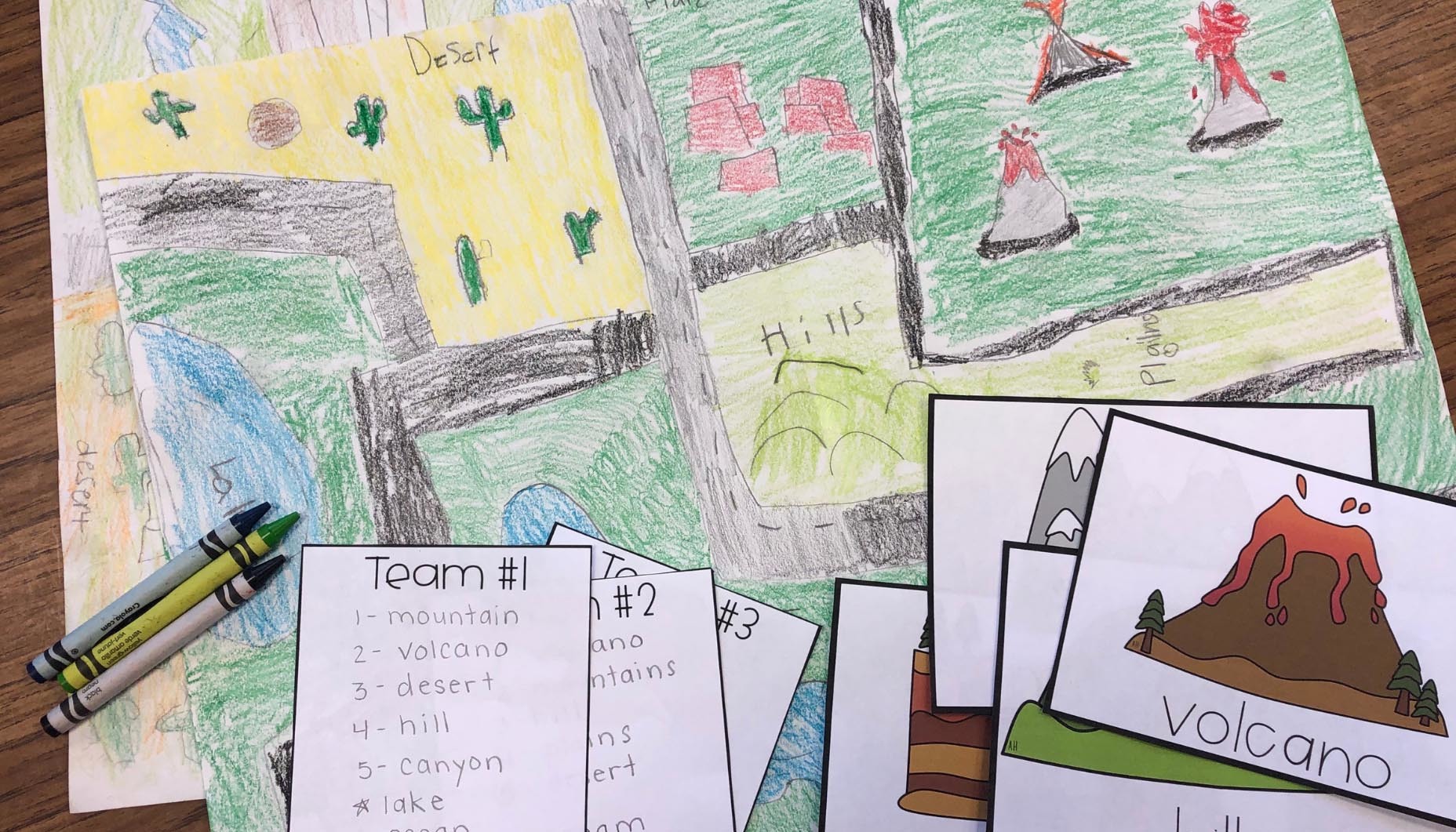
Now it's time to create project groups. Have each group create a list of landforms and bodies of water that they will build. If needed, you can provide groups with the free vocabulary cards. Once they've created their list, groups need to work together to create a rough draft map using white construction paper and crayons.

Groups are now ready to build and paint. This is where things can get extremely messy and complicated. With a project-based learning project, it is important not to dictate student thinking. As a teacher, this can be difficult. We are trained to model and provide examples, but it is important that we sit back and watch students work together as a team!
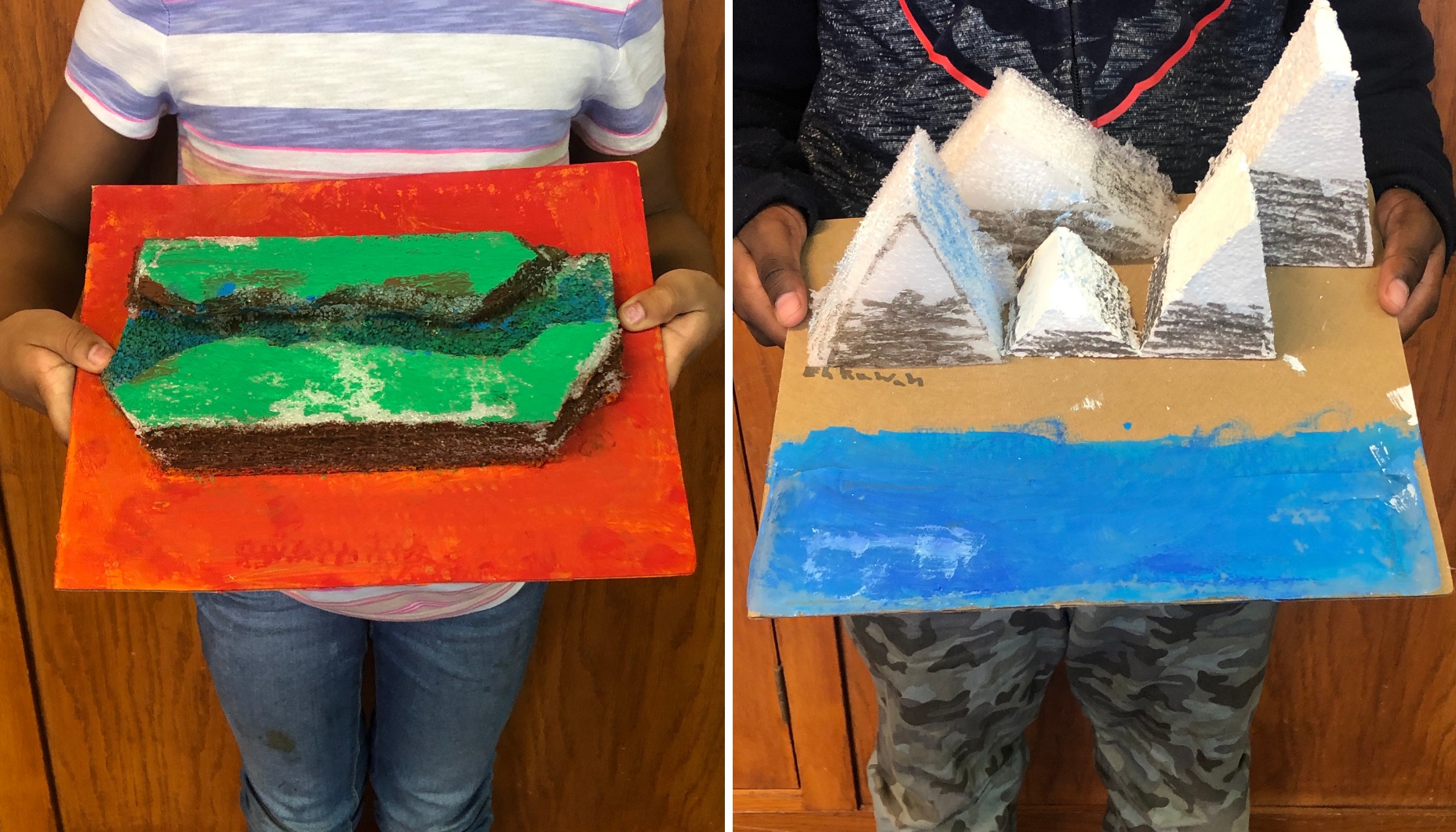
Groups created their landforms and bodies of water using air dry clay, cardboard cones, pipe cleaners, green moss, paint, Kinetic Sand, construction paper, and styrofoam. Sitting back and allowing students to create landforms freely was a huge challenge for me. I really wanted to jump in and provide explicit directions.

Check out how unique each landform looks! Each group worked so hard and I was impressed with their collaboration skills.

How adorable are the little cacti in the desert?! The Kinetic Sand was perfect to stick to the cardboard base. The air dry clay worked perfectly for many things during this project, including the cacti.

Students then started to create their map by adding roads and accents for their landforms. Again, sit back and let students do the work! The only modeling I provided was how to cut more than one piece of an item at a time.
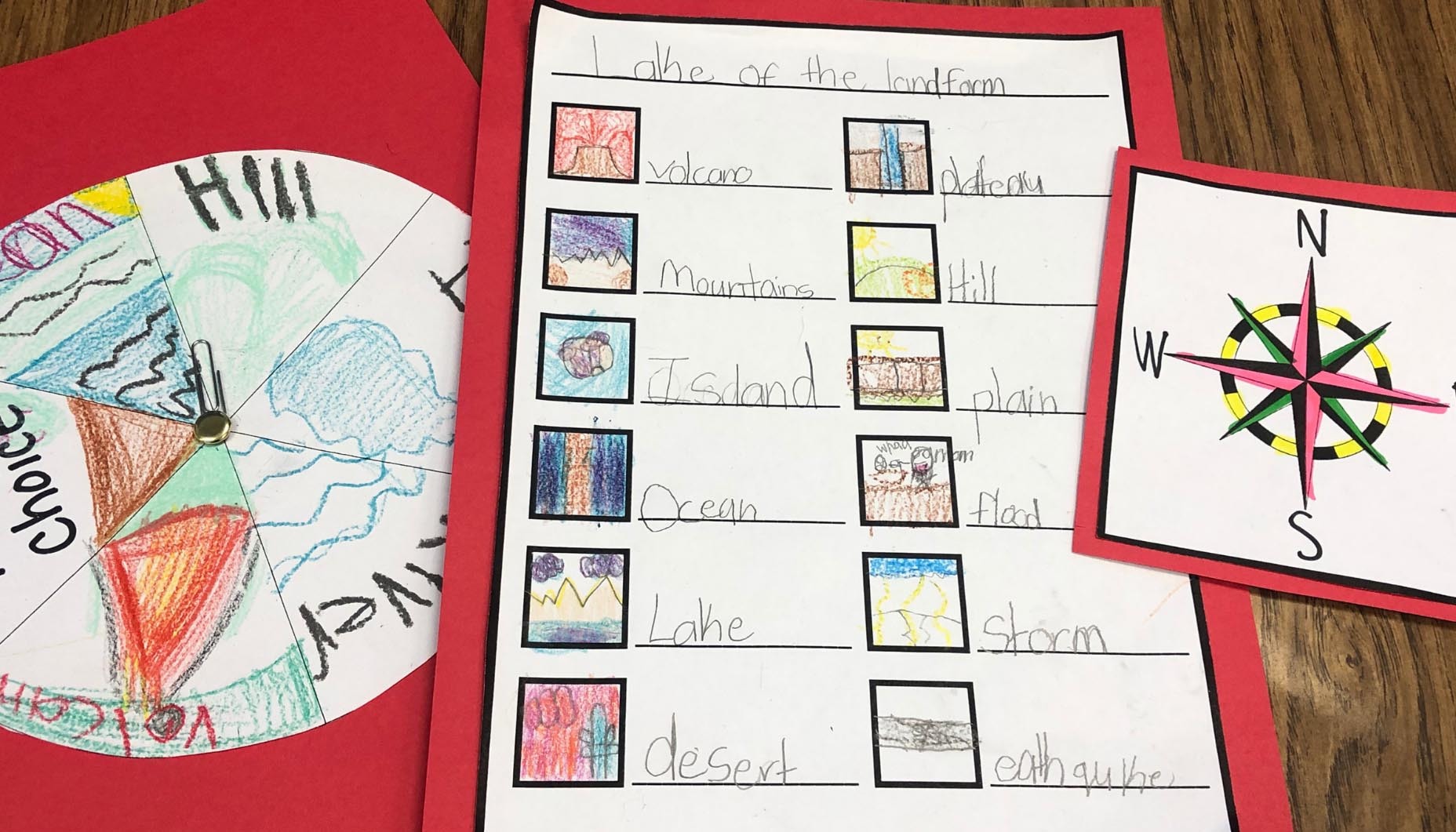
Groups were also responsible for creating a map key, compass rose, and landform spinner. You can grab all of the printables here for free. These materials were used for our showcase and to help us show our understanding of maps.
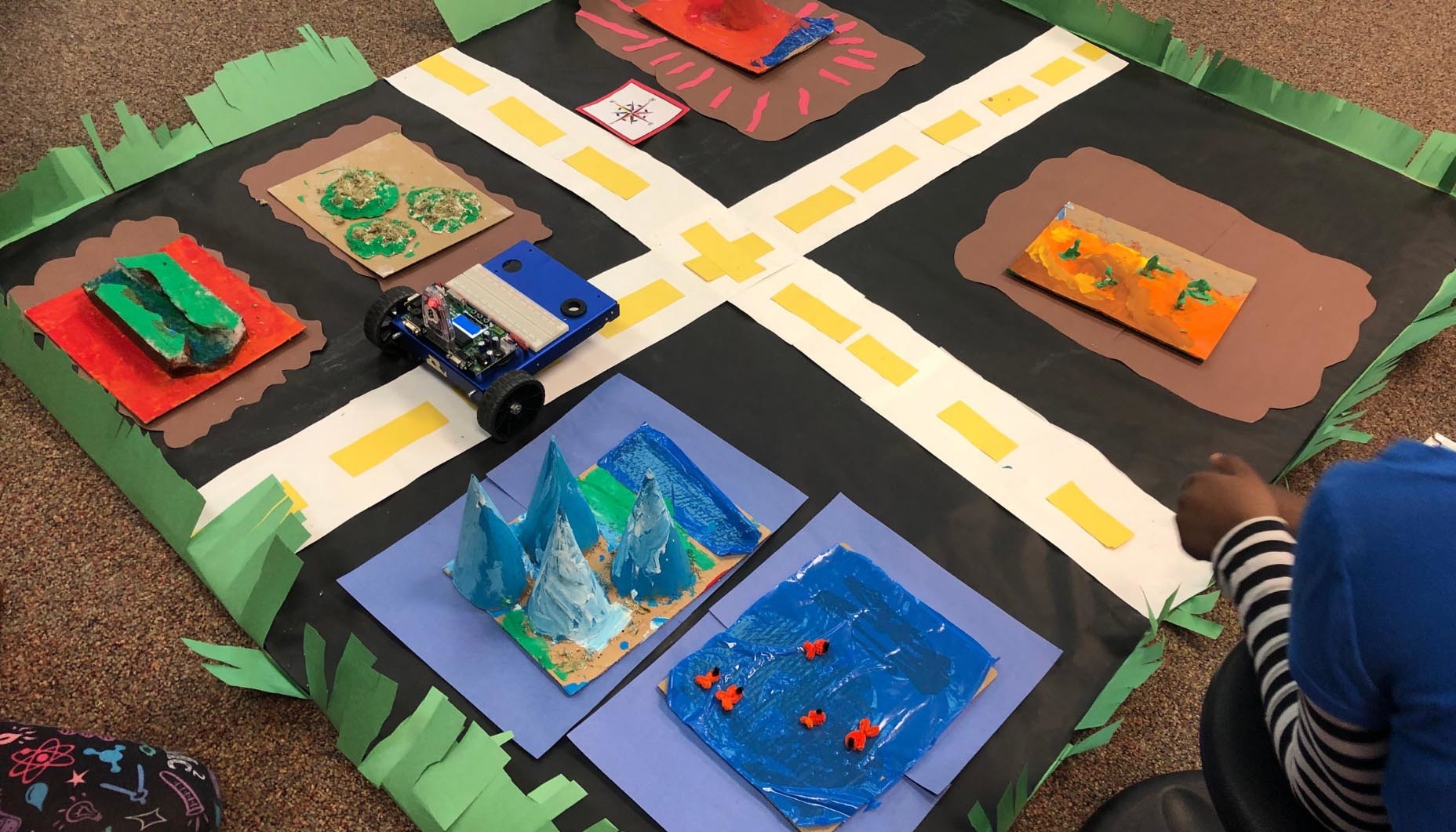
Now that all of the hard work is done, it is time to invite parents, support staff, and other classrooms to the showcase! For the showcase, our fourth grade book buddies came to learn all about landforms. Our buddies would spin the spinner and then drive the machine to the correct landform. Groups then had to explain the landform and what would happen during a natural disaster. If you don't have a machine to drive, you could use a Pull Back Race Car or have students walk to the landform.
Completing a project-based learning lesson can be overwhelming, but the benefits of seeing your students' eyes lighting up as they are presenting is worth it all. This will be a lesson that students remember for years to come!

